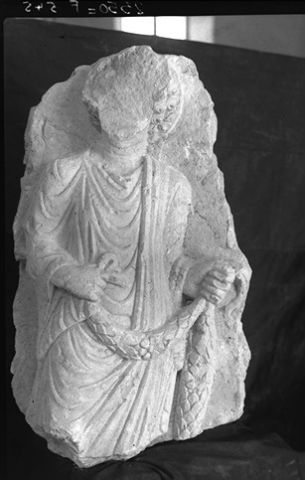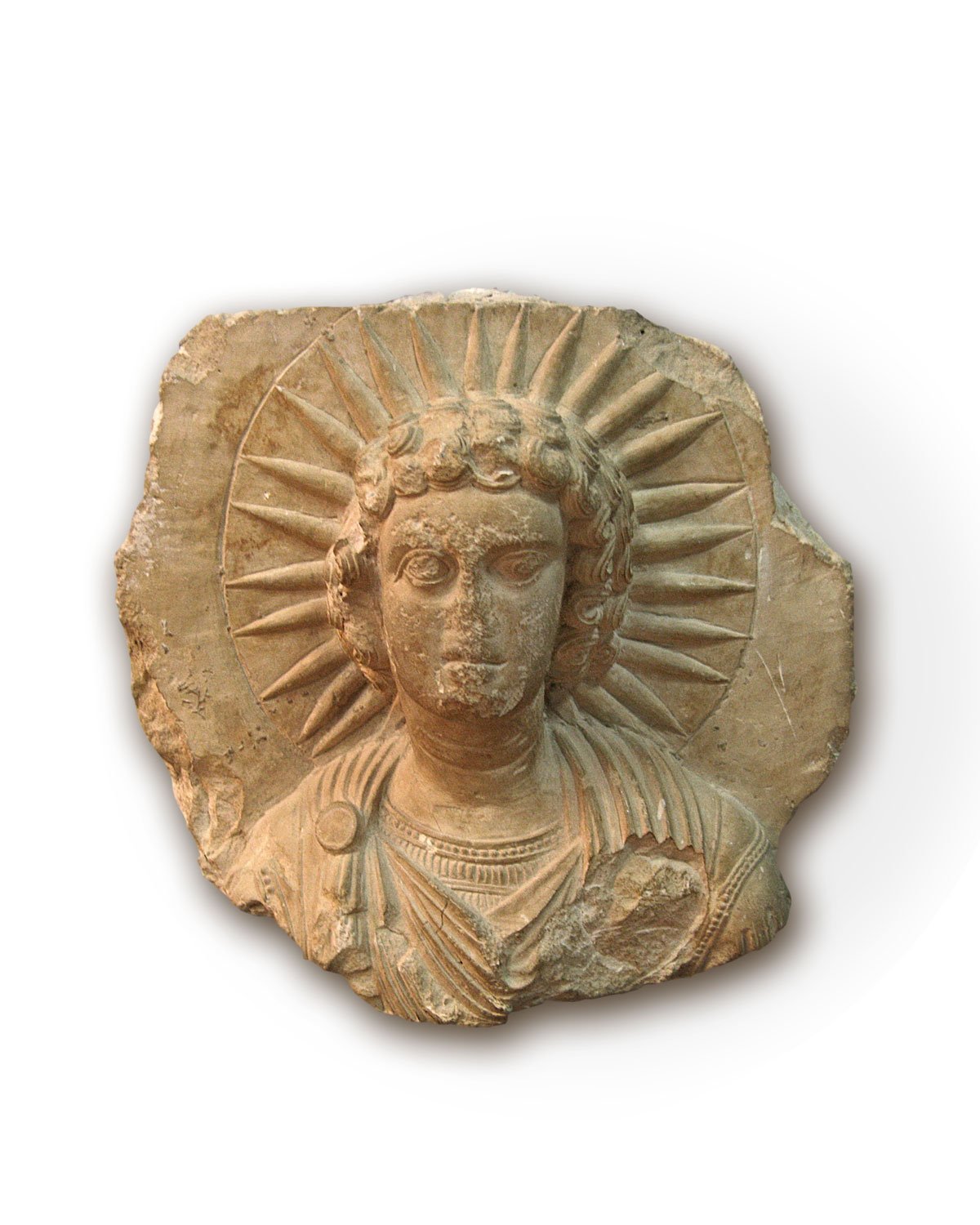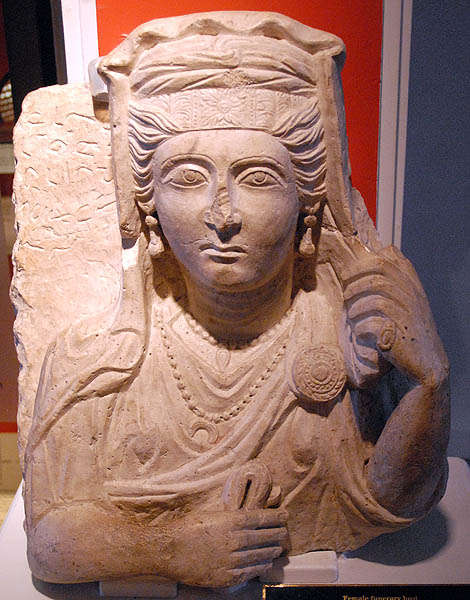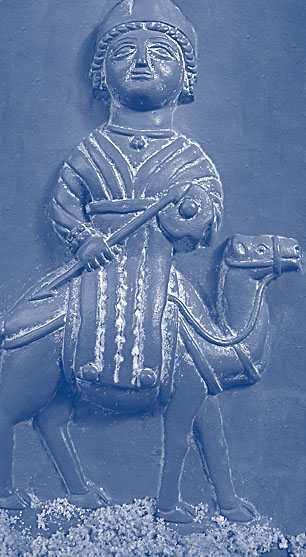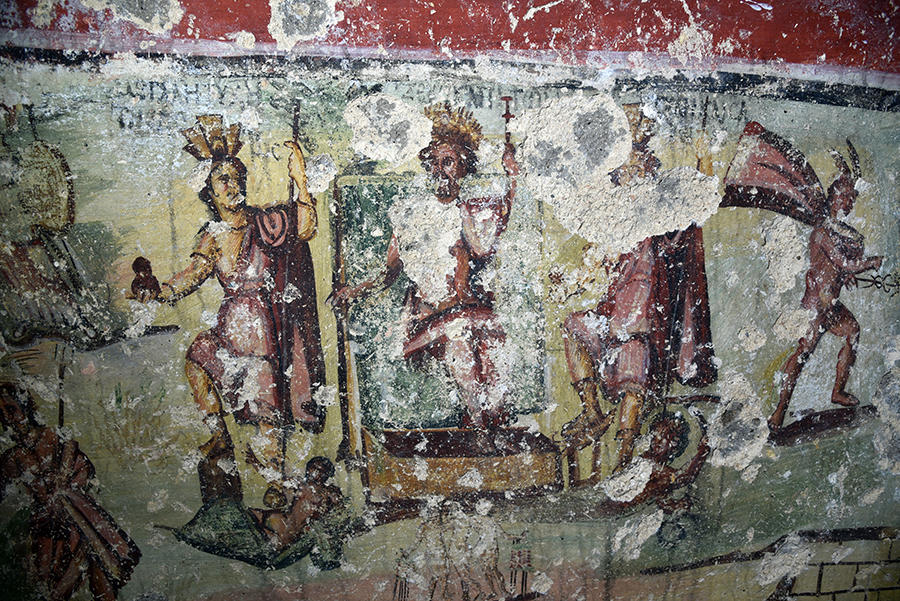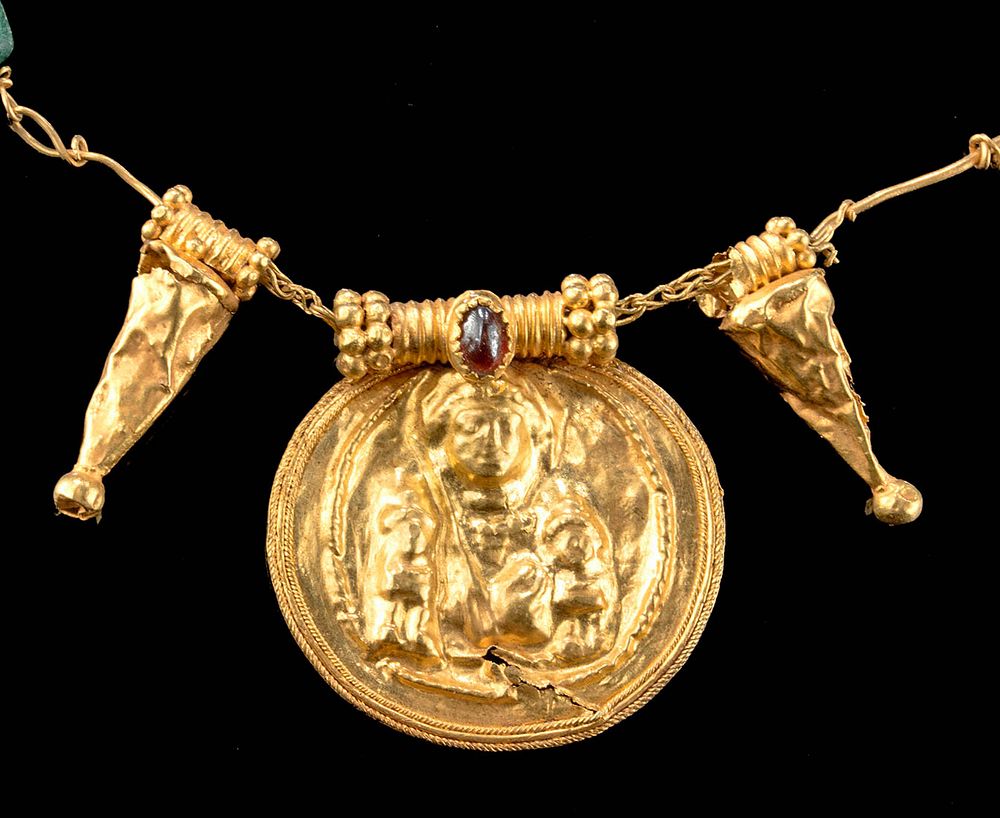
Highly ornamental seat adorned with the cult’s cista mystica is carried in procession on the shoulders of four galli.
Revisiting the pediment of the Palatine metroön: a Vergilian interpretation – Roslynne Bell https://www.jstor.org/stable/25754010
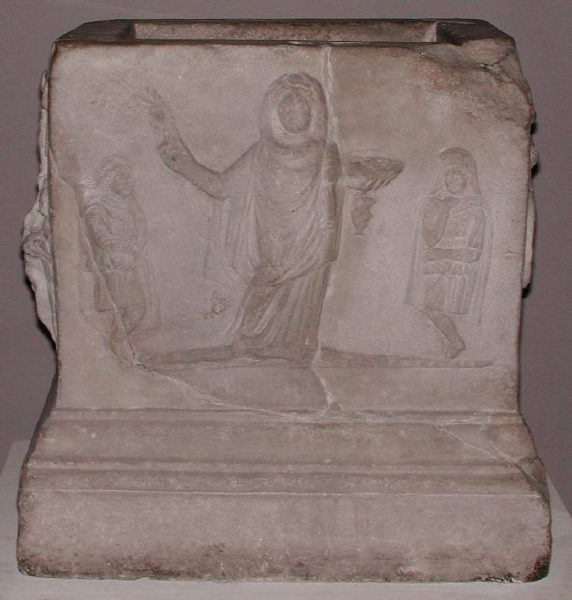
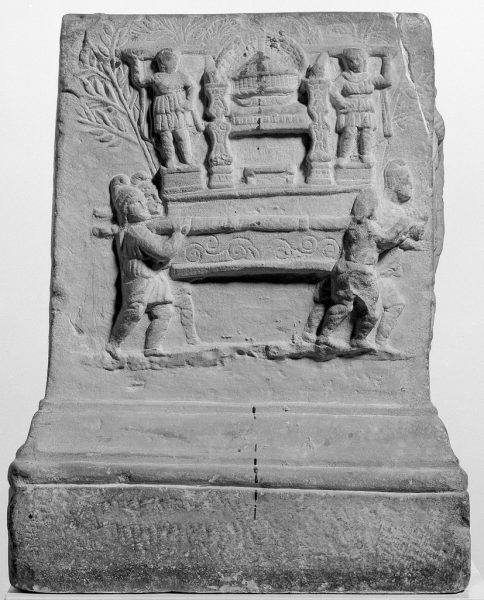
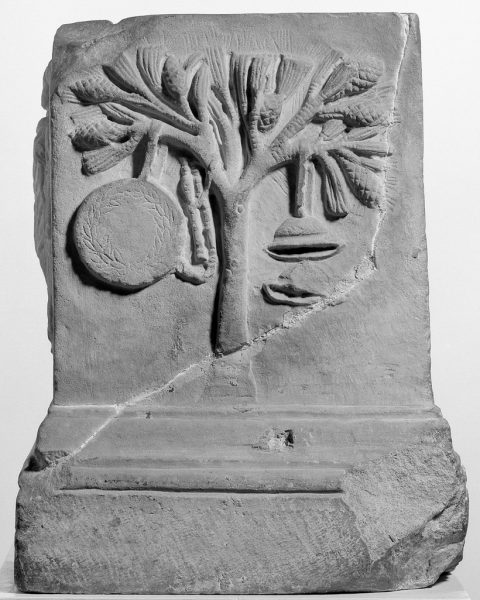
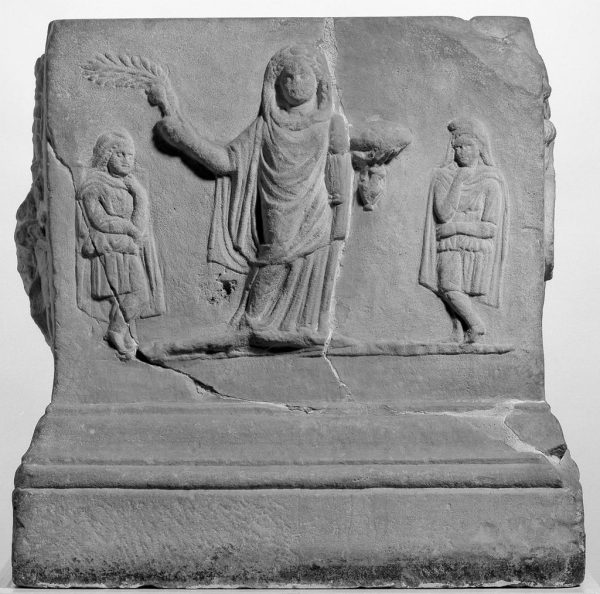
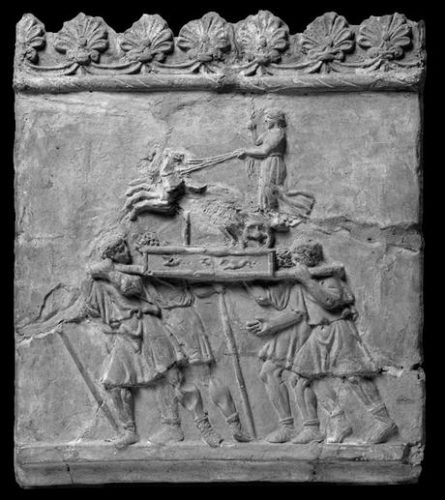
https://es.paperblog.com/ludi-circensis-i-el-circo-romano-en-la-antigua-roma-5595691/
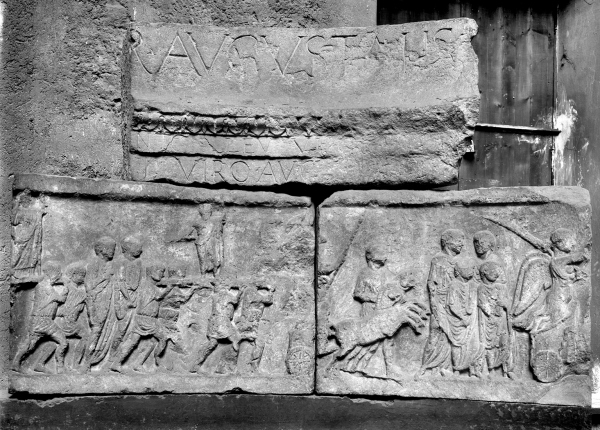
Sylvia Estienne
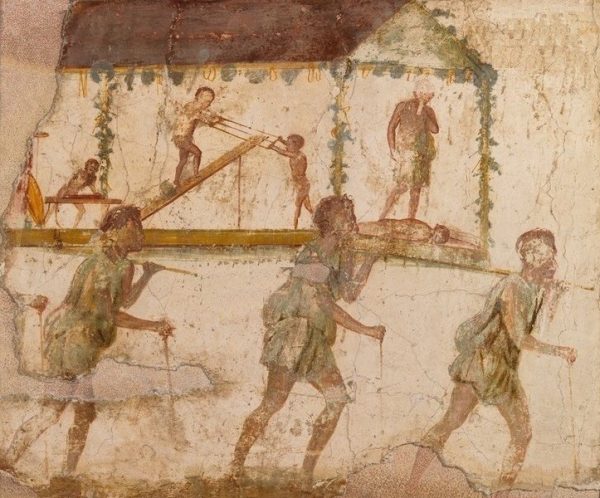

pic. 1) On the pillar of the shop, procession of wood craftsmen, carrying a ferculum and the statue of Minerva, the protective goddess. Behind planing characters, sawing wood. A man contemplates a body lying on the ground, a nail in his head, and would be Daedalus and Partridge. [Description Alix Barbet, arch. photo nr 98/26/11]
pic. 2) Feminine deity in a temple (Isis?) and a procession of the faithful on both sides. On the right, a priest with a sistrum, and a character carrying objects on a stretcher. On the left, Hercules holding his club on the shoulder, giving a hand to his wife (Hercules” wedding?), behind a procession of characters, four of whom are carrying a temple on a stretcher. All on a yellow background. [Description and photo Alix Barbet, arch. photo nr 79/93/8]

Photo by Roger Ulrich RBU 2011

Photo by Roger Ulrich RBU 2011
- A fragment of a scene of a triumphal procession from the Temple of Apollo Sosianus (Apollo in Circo) in Rome. Attendants are shown carrying a small litter (ferculum) that holds round loaves of bread and parts of a dismembered pig. The frieze belongs to the cella of the temple. Excavated in 1937. Luna marble
Capitoline Museums (now in Montemartini/ACEA branch) inv. 2777. - Close-up view of the ferculum (litter) carried by attendants depicted on the interior frieze from the Temple of Apollo in Circo (or Apollo Sosianus). Note the round loaves of the type also found at Pompeii. In the center is the head of a pig; the second object from the left and the first on the right may also be parts of a cut-up pig.
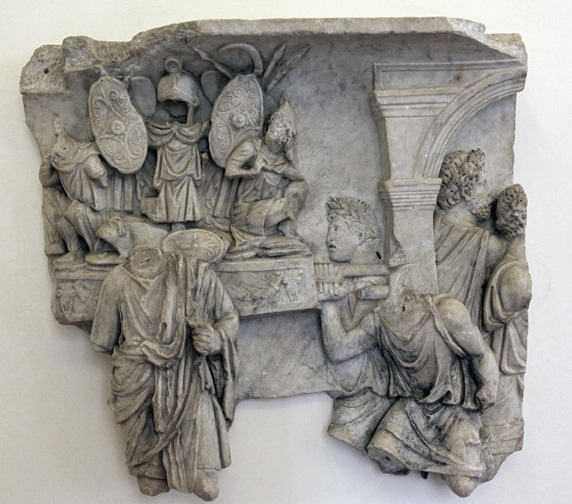
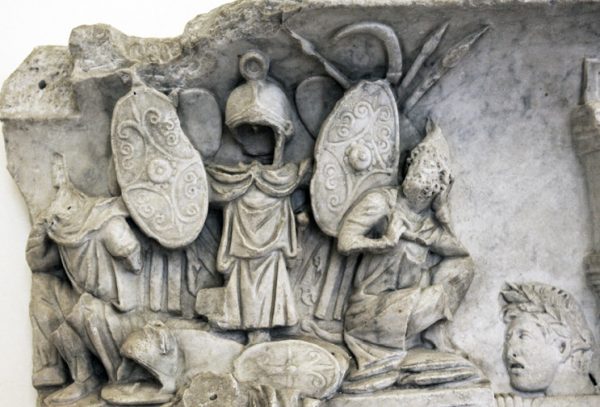

- A fragmentary relief sculpture in the Palazzo Altemps in Rome (Ludovisi collection) that depicts prisoners and a trophy borne on a litter (ferculum triumphalis) in a triumphal procession. The prisoners appear to be Parthians (note the peaked hat on the figure to the right), perhaps associated with the campaigns of Septimius Severus, and have been dated to the very end of the 2nd century. The bound barbarian prisoners are depicted at a much smaller scale than that of the men in the procession. An arch, perhaps a city gateway or a freestanding triumphal arch is shown on the right.
Palazzo Altemps, Rome (Museo Nazionale, Rome) inv. 8640 Luna marble - Detail from a fragmentary relief sculpture in the Palazzo Altemps in Rome
- The laureate head of a Roman helping to bear the heavy litter (ferculum) bearing prisoners in a triumphal procession.
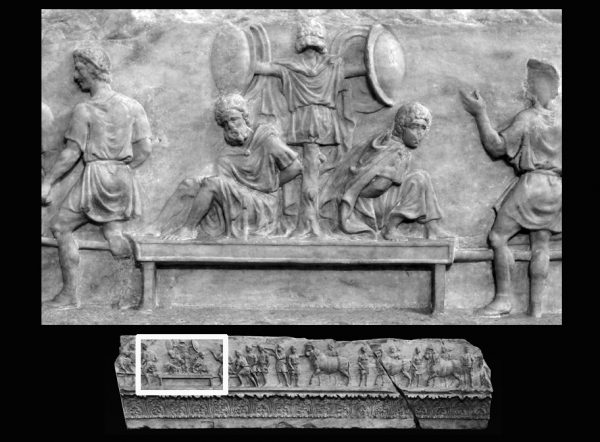


- Detail from the interior frieze of the Temple of Apollo in Circo showing part of a triumphal procession with captured barbarians. The prisoners are being carried on a platform (ferculum) which is shown at rest. At the center, a Roman Trophy of captured arms.
- The dress of the barbarians, who have been bound and are being displayed on a ferculum (a litter) as part of a triumphal parade, indicates that they are captives from the north. This leads some scholars to see this depiction as reference to the first day of the future emperor Augustus’s great triple triumph of 29 BCE (a celebration of victory over the Dalmations, Pannonians and others from Gaul and Germany). In the center a fine representation of a military trophy with four round shields, barbarian dress including a tunic and a mantle, and an odd-looking, wig-like hairpiece, all arranged on the trunk of a tree. Found in 1937; Capitoline Museums (Montemartini) inv. 2776.
- A composite image from five separate photographs of the largest surviving fragment from the interior frieze from the Augustan-period Temple of Apollo in Circo (the in Circo refers to the location of the temple on ther perimeter of the Circus Flaminius in Rome). The temple is also referred to as the Temple of Apollo Sosianus after the name of its patron C. Sosius. The scene shows a triumphal procession (left half, with captured barbarians) and animals being led to sacrifice. The procession seems to refer to the triple triumph celebrated by Augustus (29 BCE) and is thus dated to ca. 25 BCE.
Terracotta figurines with a procession scene
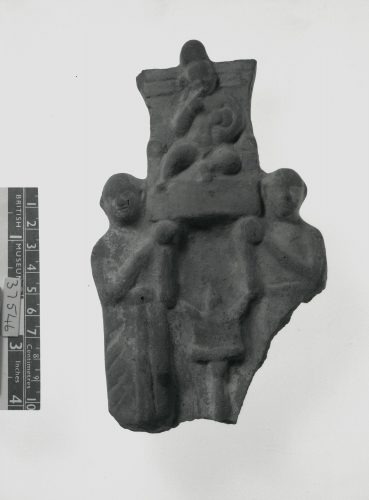
Two priests carrying in procession a throne with Harpokrates.
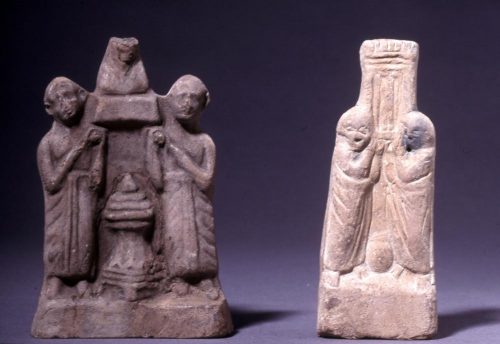
SOURCES
- Revisiting the pediment of the Palatine metroön: a Vergilian interpretation – Roslynne Bell https://www.jstor.org/stable/25754010
[read for the role of Attis and galli] - Tradition locale contre unité supra-régionale: le culte de Magna Mater – Katharina Rieger https://www.researchgate.net/
- La construction du divin au prisme des processions à Rome – Sylvia Estienne academia.edu
- NOTE SULL’ICONOGRAFIA DI UN RILIEVO FUNERARIO DA AMITERNUM: MODELLI E SCELTE FIGURATIVE DI UN LIBERTO MUNICIPALE Fabio Guidetti https://www.jstor.org/stable/44368158
- Dictionary of Roman and Greek Antiquities – Anthony Rich





